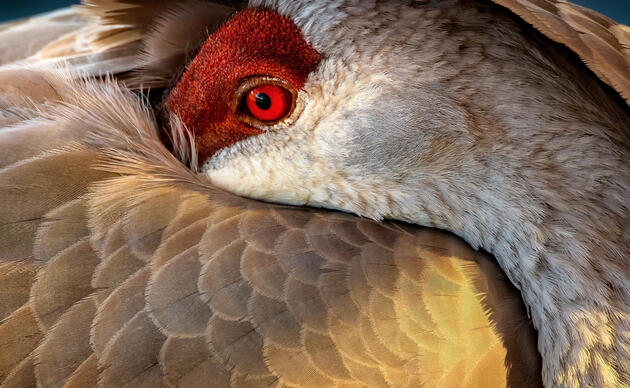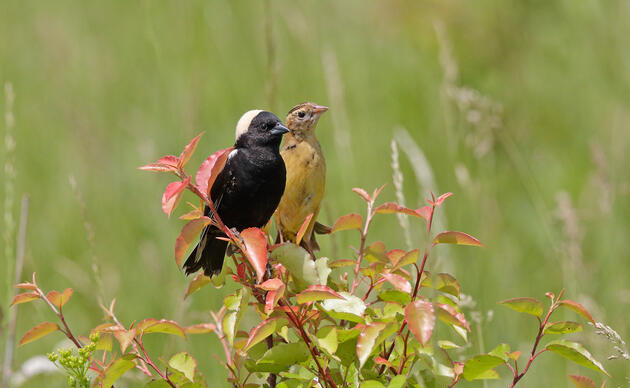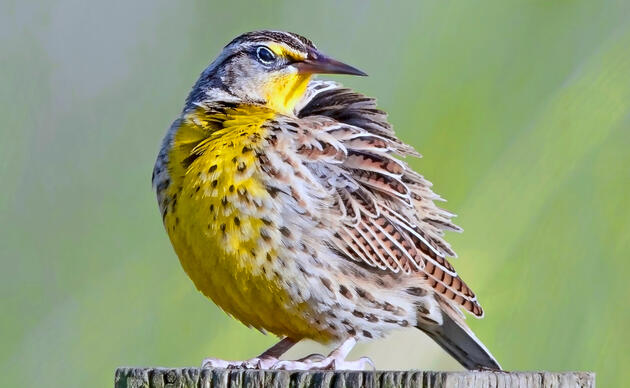With the coming of spring and the return of our nesting birds, Audubon Great Plains’ working lands team is hard at work assisting landowners with habitat enhancement and restoration throughout the Northern Great Plains. Our working lands work aligns with the National Audubon Society Flight Plan in two key areas: habitat conservation and natural climate solutions, as healthy grasslands are a critical part of providing passage and safe havens for migratory and resting birds, but also excellent at storing greenhouse gases in the soils beneath them.
Our working lands work is broken down into five primary activities: market-based conservation, financial assistance for enhancement, financial assistance for restoration, migratory habitat protection programs, and educational and outreach work to showcase enhanced management. These actions help Audubon Great Plains address the variety of challenges that face grasslands and grassland managers today, and provide a brighter future for our grassland dependent birds.
Audubon’s largest grassland program focuses on market-based conservation. Audubon Conservation Ranching (ACR) represents more than 100 ranches and 3 million acres nationwide of land that provides improved habitat conditions for birds through the technical assistance provided by Audubon Range Ecologists. Audubon Great Plains, is assisting 25 ranches representing over 220,000 acres of grasslands with habitat planning, conservation, restoration, and enhancement.
This year, we have engaged with Cheyenne River Ranch and Wild Idea Buffalo’s (wildideabuffalo.com) home ranch, and both have been certified as bird friendly. Wild Idea Buffalo is a South Dakota based grass-fed, field harvested buffalo meat company. We are working with source ranches for Wild Idea to get more of their supply chain certified. The next exciting partnership is with Thousand Hills Lifetime Grazed (thousandhillslifetimegrazed.com). Thousand Hills, one of the nation’s largest grass-fed beef companies, is based in Minnesota and has ranches spread throughout the Northern Great Plains. Excitingly, they have beef in retail stores in all 50 states, which will be a huge milestone for ACR once all ranches are certified within the next couple years.
In addition, our Prairie Management Toolbox programs provide financial assistance to help us manage the grasslands our birds rely on. Our Range Ecologists develop project-specific management plans for producers and the financial assistance allows the producer to implement the project at less risk to their own operation. Over the last 7 years, Audubon Great Plains has impacted over 45,000 acres.
Grasslands continue to face an existential threat by their ongoing conversion to cropland, forests, and urban development. Audubon Great Plains provides financial assistance for grassland restoration through seeding marginal croplands back to grassland through the Conservation Forage Program (CFP) and removal of invasive woody species, often under the umbrella of the Toolbox programs. CFP was innovated in North Dakota to bridge a gap on traditional grassland restoration programs and focus on creating working grasslands. The model has been identified as an excellent alternative to traditional grassland restoration programs, and was recently expanded to South Dakota in partnership with Ducks Unlimited through a $25 million Natural Resources Conservation Service Regional Conservation Partnership Program award. Together these programs aim to restore 43,000 acres of marginal croplands to grasslands in the Dakotas and provide a model that is ultimately available nationwide through federal financial assistance programs.
As we address the existential threat to grassland through restoration, we also work with US Fish and Wildlife Service (USFWS) to provide protection through our migratory habitat protection programs. Historically we focused on securing North American Wetland Conservation Act (NAWCA) dollars directly, or with partners, to provide permanent protection for grasslands through easements held by USFWS. Today, we focus on assisting the USFWS in prioritizing easement locations and soliciting interest, with a particular focus on habitat used by migrating Sandhill Cranes in the Dakotas.
Finally, we implement grassland conservation activities on Audubon owned lands and provide educational events focused on landowners, producers, and grassland managers. At Spring Creek Prairie Audubon Center, the staff works to implement a variety of conservation activities focused on maintaining the diversity and function of one of the largest continuous tallgrass prairies left in eastern Nebraska. At Audubon’s Rowe Sanctuary, staff implement habitat improvement projects aimed at providing habitat for staging sandhill cranes, by maintaining an open river channel for roosting and managing grasslands to provide important foraging areas and secondary roost sites. At the Edward M. Brigham III Alkali Lake Sanctuary and the Frederick L. Wicks Prairie Sanctuary in North Dakota, Audubon implements rotational grazing systems on native and restored grasslands to provide the heterogeneity needed by migrating and nesting grassland birds.
If you have the privilege of crossing paths with one of our working lands team, ask them about some of their projects and some of the interesting things they’ve been seeing lately. We love what we do for the resource, and hope to inspire others to care as much about grasslands and we do.
Working Lands





